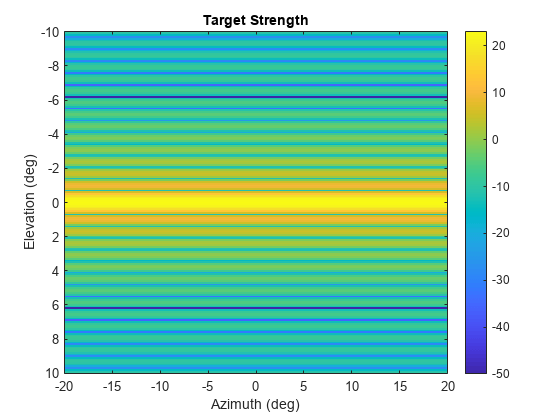value
Target strength at specified angle and frequency
Description
tsval = value(tssig,az,el,freq)tsval, of the target strength specified by the
target strength signature object, tssig, computed at azimuth
az, elevation el, and frequency
freq. If the specified azimuth and elevation is outside of the region
in which the target strength signature is defined, the target strength value,
tsval, is returned as -Inf in dBsm.
Input Arguments
Output Arguments
Object Functions
perturbations | Perturbation defined on object |
perturb | Apply perturbations to object |
Examples
Extended Capabilities
Version History
Introduced in R2018b

